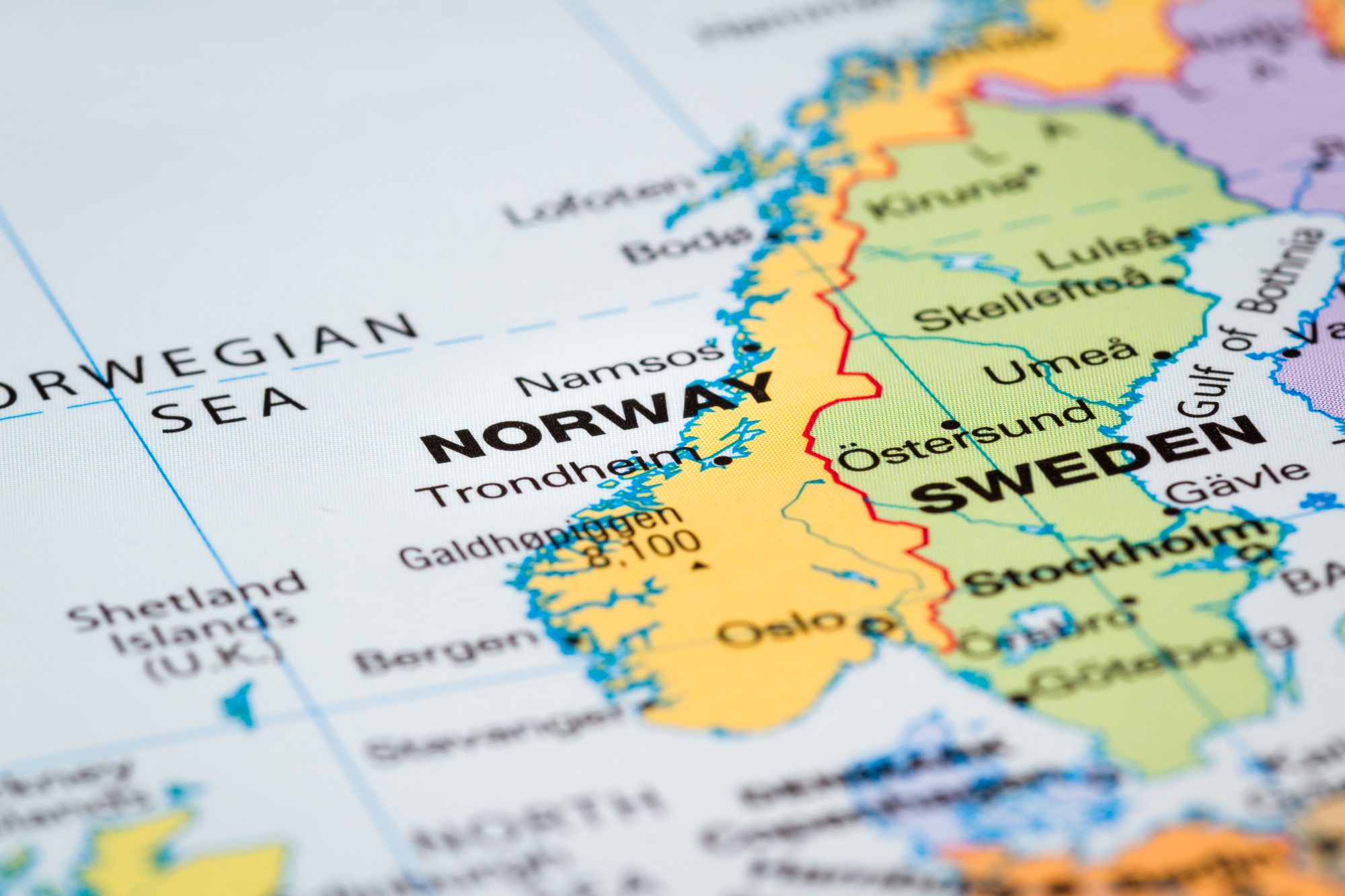Nordic countries are usually associated with a high standard of living, high investment in the public health sector and low population density. Here, Dr. Biljana Stangeland analyzes the drastic difference in COVID-19 accidents between Norway and Sweden
The Nordic countries were affected by their first cases of covid-19 at the end of February 2020. (1) The number of cases increased rapidly from the beginning. (2) In order to deal with the covid-19 outbreak, the Norwegian government implemented drastic measures on 12 March 2020, such as compulsory home offices, closed institutions, social distancing and the restriction of public gatherings. On March 16, 2020, the country was officially shut down for travel. Denmark, Iceland and Finland implemented similar measures, while life in Sweden, apart from a few restrictions, continued as usual.
What was the effect of the lockdown?
During the time before and after the lockdown, we continued to monitor the situation by calculating doubling times (DT) for covid-19 cases in the Nordic countries. DT is a measure of population growth.
Already one week after the closure in March 2020, the positive effects were visible in several Nordic countries, (3) and two weeks after the implementation, the spread of infection slowed down. (4) The subsequent lock-in and lock-down regimes existed throughout 2020 and most of 2021 in the Nordic countries, with the exception of Sweden, which based its strategy mainly on recommendations, not restrictions. At the beginning of October 2021 and about 92 weeks after the outbreak, Norway, Denmark and many other countries finally abolished all restrictive measures.
Were the drastic and widespread measures effective and how did they affect Norway in comparison with Sweden, which remained predominantly open throughout the epidemic?
To answer this question, the number of confirmed cases and deaths in selected Nordic countries was assessed again (Figure 1A). According to ECDC (5), there were a total of 1.16 million documented cases of covid-19 in Sweden, while more than 14,900 people lost their lives due to the disease. In Norway during the same period, there were 193,000 confirmed covid-19 cases and 871 covid-19-related deaths. Adjusted for the population size, the number of cases was five times higher in Sweden, and the number of covid-19-related deaths was 12 times higher in Sweden than in Norway (Figure 1B).
To understand how this enormous disproportion can happen, we must go back to the first shutdown and map the number of cumulative cases and DT in Norway and Sweden during the period of 92 weeks in a row from the eruption in January 2020 to October 2021 (Figure 1C-D). In March 2020, the number of covid-19 cases, calculated per inhabitant in Norway, was not so different from that in Sweden and Denmark. (2,3,4,6) However, the situation began to change in April 2020 when it was obvious that the Swedish scenario differed from the Norwegian one. (7) In the spring of 2020, Sweden experienced a higher increase in the number of cases than in the neighboring countries Norway and Denmark (Figure 1A). Sweden’s recommendation-based strategies and lack of will to take more draconian measures was to blame, at least according to some experts. (8)
What is the lesson to be learned from the Swedish and Norwegian examples?
The general conclusion of many studies is that in addition to the effects on societies, the strict locks were, at times, effective in preventing the spread of the infection. Does this agree with the Nordic examples presented here? The examples of Norway and Sweden, two similar societies that chose different paths during the epidemic, are very interesting. For 92 weeks after the outbreak, the two, otherwise very similar, nations experienced enormous differences, especially in the number of cases of covid-19 and related deaths per inhibitor. The differences are obvious, but is the explanation so simple? Why did things go so wrong in Sweden? Many of the Norwegian and Swedish experts have wondered the same thing. (9) The scientific literature is still somewhat incomplete. Can the mortality shift explain the exaggerated Swedish deaths, as some researchers have suggested? (10)
Alternatively, could better practices in nursing homes have prevented many senior residents from dying, as others have suggested? (11) When interpreting statistical data and overlooking important conclusions for fear of exaggerating that one causes the other not uncommon. (12) The closest we come to a randomized, scientific scientific study with covid-19 virus transmission is an implementation of covid-19 measured in two similar countries such as Norway and Sweden. We should refrain from hasty conclusions, but we cannot turn a blind eye to the overwhelming statistics.
References
- Stangeland, B. https://www.dagensmedisin.no/artikler/2020/
03/12 / think-infection-growth-is-undercommunicated /. Today’s Medicine (2020).
- Stangeland B, https://www.dagensmedisin.no/artikler/2020/
03/12/70-days-with-covid-19- -and-still-confused /. Today’s Medicine, (2020).
- Stangeland, B. How to evaluate the success of the covid-19 measures implemented by the Norwegian government by analyzing changes in doubling time. medRxiv, 2020.2003.2029.20045187, doi: 10.1101 / 2020.03.29.20045187 (2020).
- Meadows, DH Thinking in Systems: a Primer. (Chelsea Green Publishing Co., 2015)
- Stangeland, B. https://www.dagensmedisin.no/artikler/2020/
21/03 / doubling-time-hard-doubled-is-the-reason-for-optimism /. Today’s medicine, online magazine (2020).
- Stangeland, B. https://www.dagensmedisin.no/artikler/2020/
25/03 / -much-suggests-that-closed-schools-and-home-office-works /. Today’s medicine, online magazine (2020).
- ECDC data archive for covid-19 cases https://www.ecdc.europa.eu/en/covid-19/data.
- Stangeland, B. https://www.dagensmedisin.no/artikler/2020/
04/22 / careful-bite-after-100-covid-19-days /. Today’s medicine, online magazine (2020).
- doi: 10.1016 / s0140-6736 (20) 32750-1 (2021).
- https://www.folkhalsomyndigheten.se/nyheter-och-press/
news archive / 2020 / October / important-that-everyone-takes-responsibility-when-the-public-row-of-others-for-people-who-are-70-years-and-ages /. (2020)
- Number of deaths in COVID-19 by age groups (October 6, 2021), https://www.statista.com/statistics/1107913/number-of-coronavirus-deaths-in-sweden-by-age-groups/. (2021).
- doi: 10.1101 / 2020.11.11.20229708 (2020).
- doi: 10.1016 / j.jamda.2021.06.010 (2021).
- Amundsen, SEJ a. B. https://sciencenorway.no/covid19-health/why-did-things-go-so-wrong-in-sweden/1824724.
Sciencenorway.no, online magazine (2021).
- Pearl, JM, Dana. The book about why. (Penguin, 2019-05-02).
Note: This is a commercial profile
© 2019. This work is licensed under CC-BY-NC-ND.

